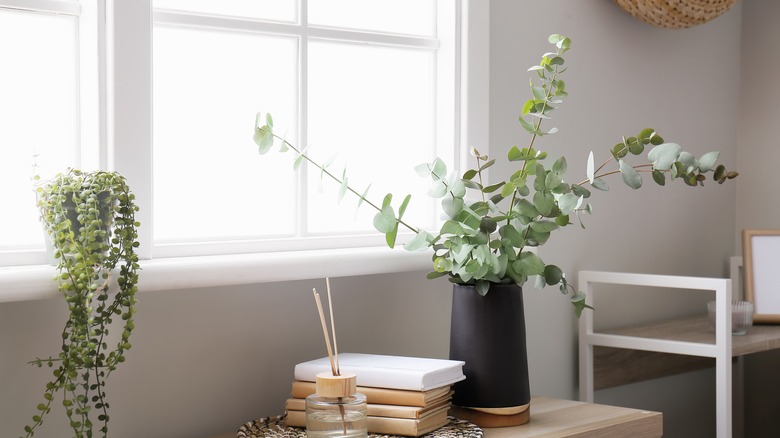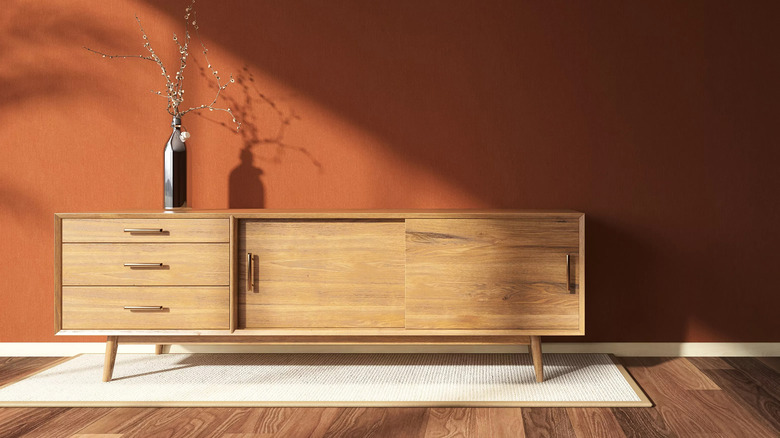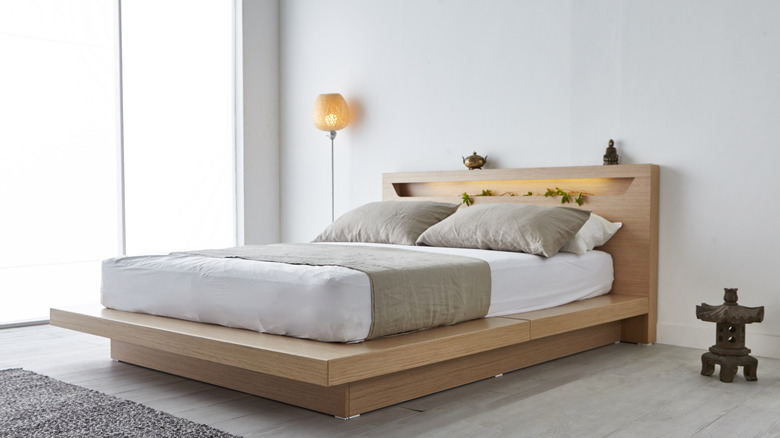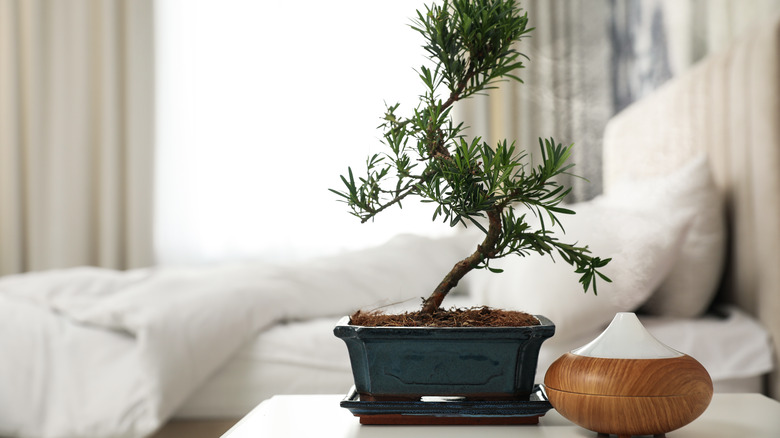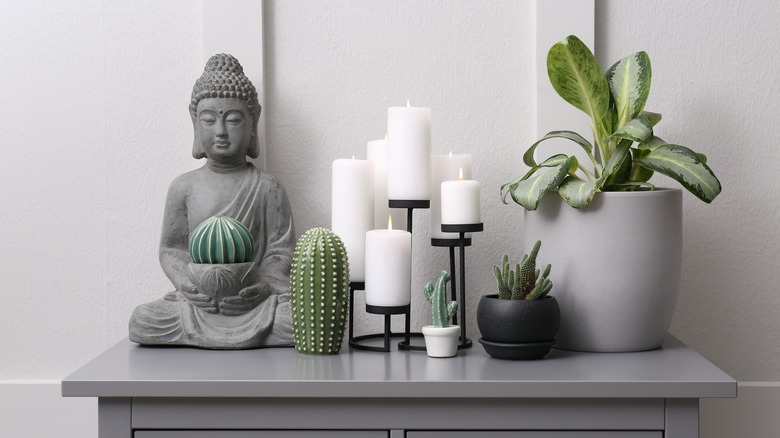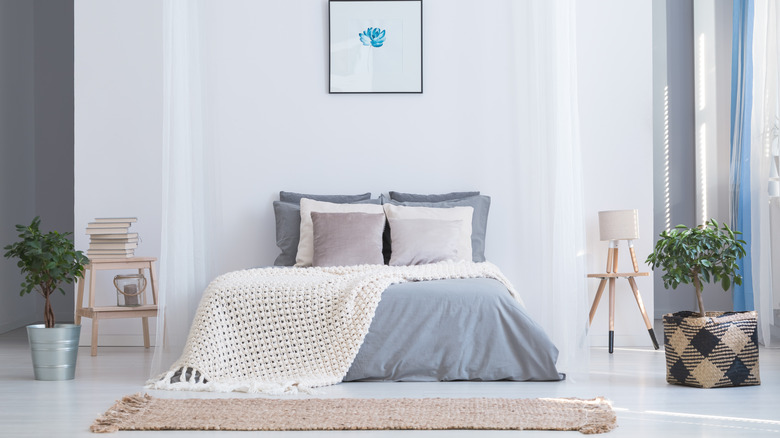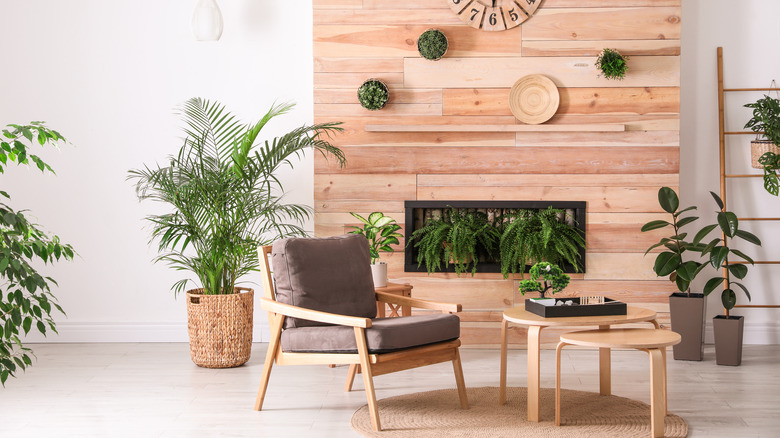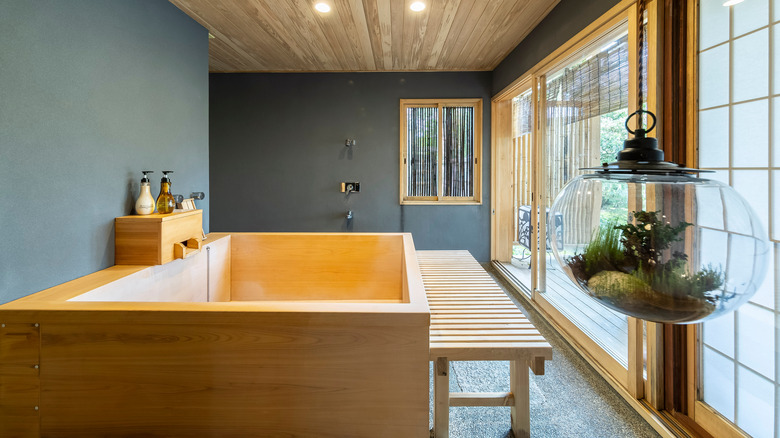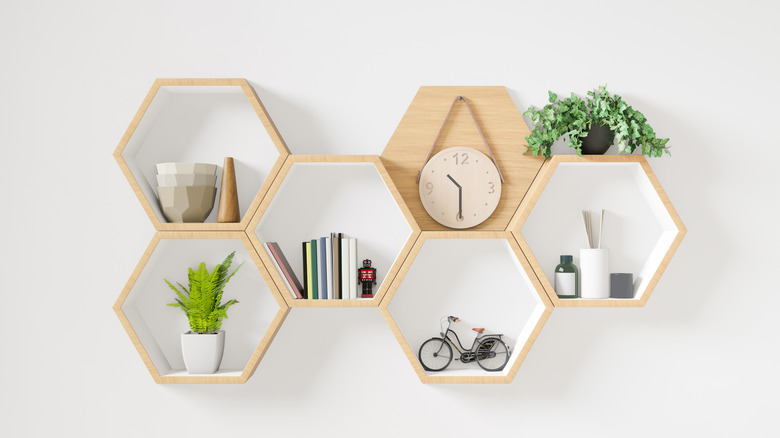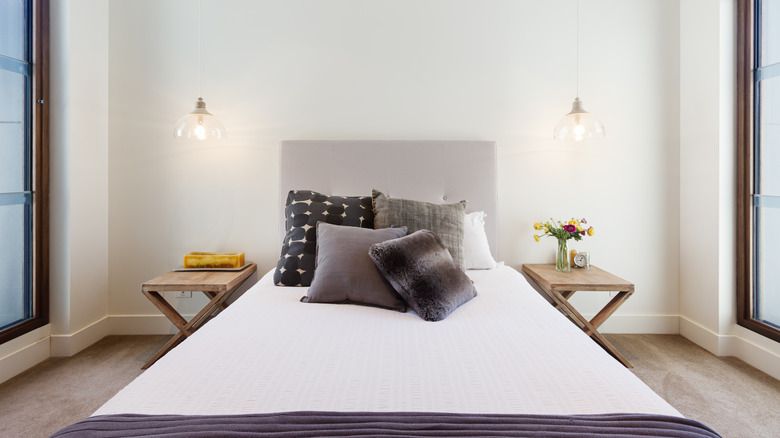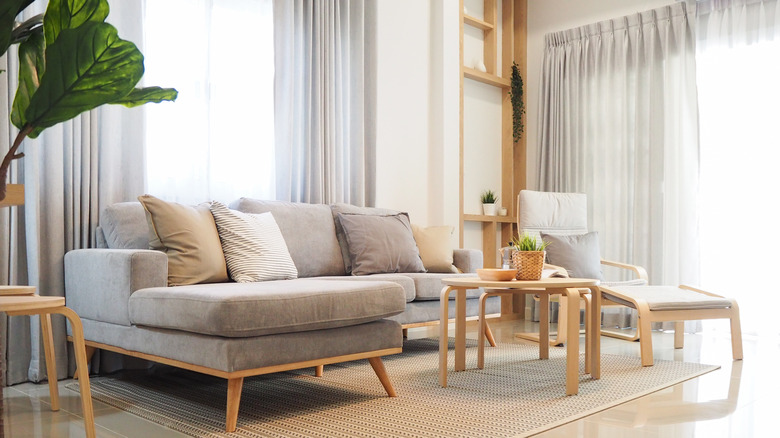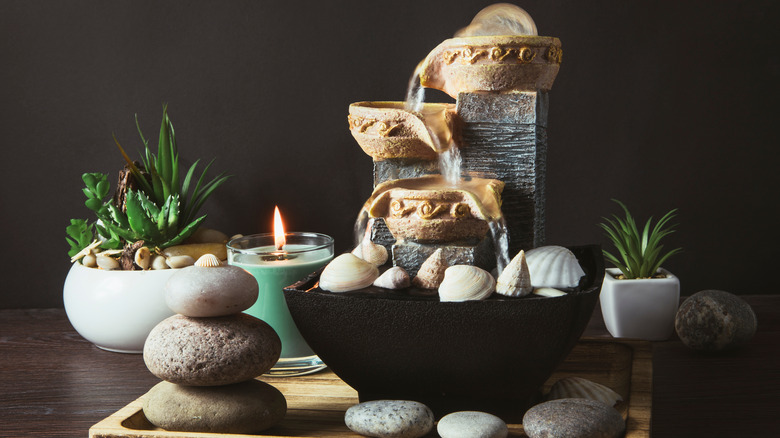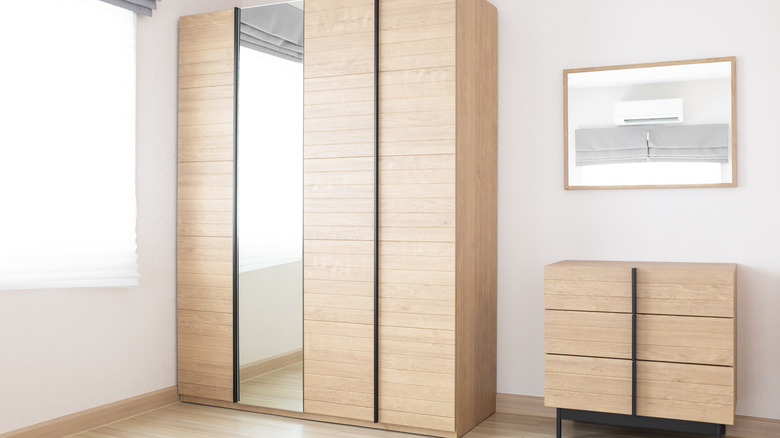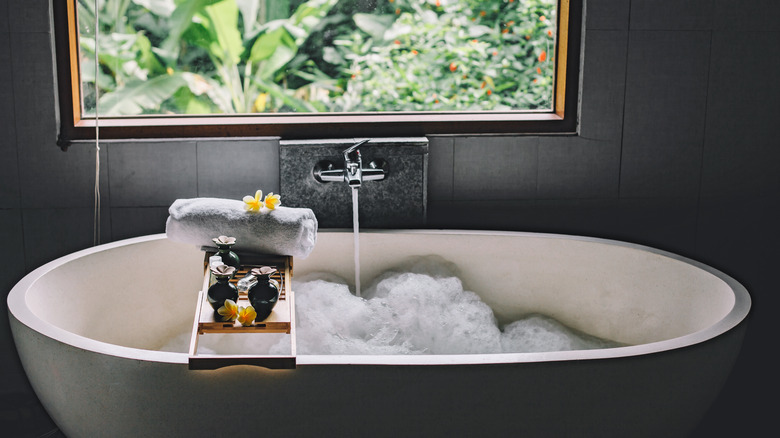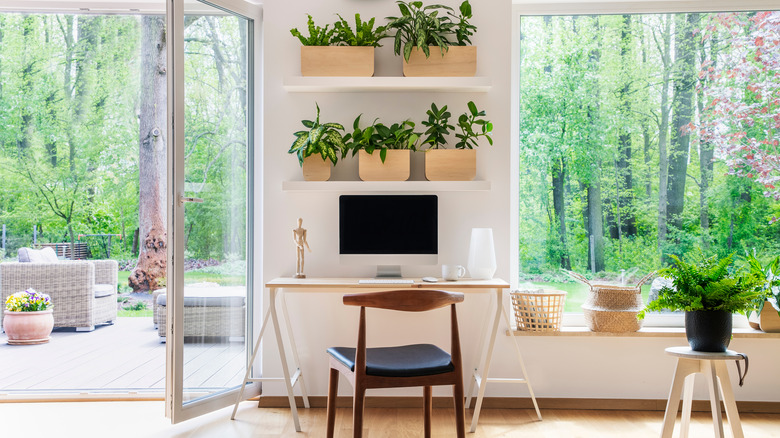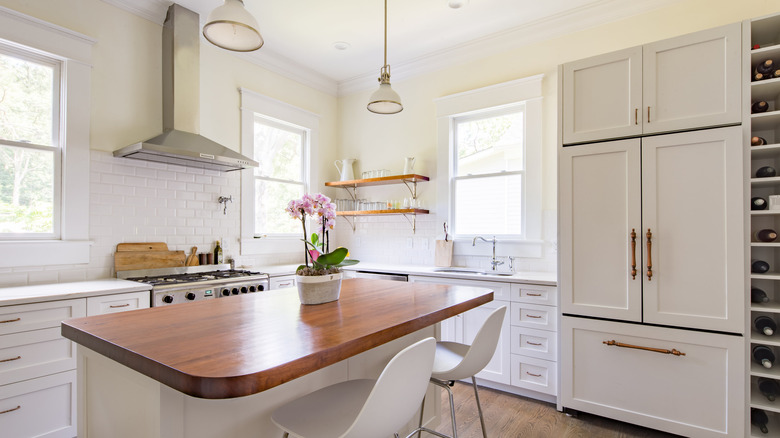The Ultimate Guide To Zen Decor
Are you trying to turn your home into a stress-free and inspirational space? Zen decor might be your answer. According to House Beautiful, the zen design style originates from Zen Buddhism. For centuries, Japanese designers have been incorporating principles of Buddhism like simplicity and an appreciation of nature into their aesthetics. Zen style first became popular on an international level in the 1950s with the rise of minimalism and continues to thrive today.
Thanks to the minimalist decor it promotes, a zen home is simplistic yet comfortable and functional. The ultimate aim is to bring balance into your life and enjoy the present moment with harmonious interiors that avoid clutter and allow each room to breathe. There are no bright or dramatic colors, and the decor is not attention-grabbing. On the contrary, the environment must be relaxing and cater to all the senses. It must stimulate positive thinking and well-being. However, zen interior design rules are lenient and allow every individual to create a unique living spot led by their inner feelings. If you feel overwhelmed about how to start transforming your home into a zen oasis, don't worry. Here is a detailed guide to help you achieve a mesmerizing zen sanctuary.
Follow a less is more approach
When creating your zen space, creating minimal interiors is of the utmost importance. Avoid placing too much furniture, items, and decor in small, confined spaces, and invest energy into eliminating everything cluttering your home. The logic behind this rule is straightforward. For instance, when you meditate, you attempt to drop all the trivial things that burden your mind. The same principle goes for zen decor. According to Quiet Minimal, you should look for ways to declutter your place and allow it to breathe. Having layers of stuff around sucks your inspiration. Plus, you'll spend precious time dusting and cleaning if you have a lot of furniture, ornaments, and other items. Getting rid of excess objects will release extra energy that you can dedicate to what's truly meaningful for you.
One way to take the pressure off your home is to simplify the styling (via Modsy). More precisely, stay true to the minimalistic approach. Your furnishings and decor must not over-style the room, and the pieces you display should be subtle. For example, pick a few items to place on shelves and tables and hang minimal artwork on the walls. Finally, add a few low-key cushions or throws on sofas and armchairs.
Let natural light in
Even if you're an interior design amateur, you'd probably imagine the perfect zen home as bright and airy. You'd be 100% right. The more natural light your place gets, the more relaxed and joyful you'll feel. Hence, focus on maximizing the sunlight your house absorbs during the day. First, ensure you aren't blocking sun rays from getting into your place. It would be best to relocate bulky furniture and heavy curtains away from the windows to let sunlight inside. Any furnishings or materials you want to use should be light. As for bedrooms, you'd probably like to control the natural light reflecting in the room. According to The Spruce, bamboo blinds are a great way to darken a room when necessary. Besides providing privacy, these harmonize with natural elements and are easy to maintain and adjust.
Apart from natural light, you can also use artificial illumination for nighttime and dark winter months. Play with soft light and take a three-tier approach (via MyMove). In short, place a table lamp in the corner and some sconces on the walls. For a final touch, add a candle or two. Alternatively, recessed lighting can do wonders for your state of mind. Besides looking streamlined, unobtrusive lights are the perfect subtle accent. Avoid harsh overhead lighting that creates a cold and uninviting environment. If you love to read, decorate with a rice paper shade lamp.
Engage all of the senses
The ideal zen home should appeal to the senses and stimulate inner peace and growth. According to Quiet Minimal, little touches are all it takes to transform your zen home into a tranquil haven. While some add-ons are personal, like your favorite music or scent, others work for almost everyone. For example, relaxing background melodies have a guaranteed calming effect. If you want to spark your sense of smell, try cinnamon or vanilla-scented candles or oil diffusers. You can also spritz lavender spray in your bedroom for a night of deep, tight sleep. In addition, don't neglect to stimulate the tactile sensation. Depending on your preference, you might want to have a cozy blanket at hand or a fluffy, shag-style rug under your feet.
Silk is a durable natural material that is lightweight and resilient (via The Spruce). Consider adding silk pillows and covers to feel the luxurious side of fabrics. While it's up to you to decide what wakes up your senses, don't overlook the importance of adding little sensory touches while creating your zen hideaway.
Invite nature inside
Nature inspires positive thoughts and makes you feel calm and meditative. Hence, seeing abundant foliage and a green living room is quite common in most zen homes. According to Elephant Stock, you should nurture potted plants in your home. They freshen up the space and act as air purifiers. Undoubtedly, inviting the natural world inside by taking care of house plants is beneficial for your health. Besides being an inexpensive way to decorate with style, greenery adds spirit to minimalist zen homes.
The best thing is that you can choose from a wide variety of plants to match your taste. For example, arrange gorgeous succulents and plant hangers to bring orderliness. Or get delicate orchids and lilies to counter depression and loneliness. Opt for a bonsai tree to achieve a Japanese look (via Quiet Minimal). However, if you aren't the green-fingered type, go for a single, low-maintenance fiddle leaf fig plant in the corner.
Choose a soothing color palette
When defining your zen design, mind the color palette. The colors you use can have a vast impact on your home. You should avoid experimenting with different colors or using vibrant hues since these provoke intense emotions. According to Modsy, leaning into neutral, pastel, and earth tones instills calm feelings. These colors are serene, elegant, and comforting. The fewer shades you paint your walls in, the less clashing feelings you'll inspire. The same goes for zen decor. Although you can use a few additions like lavender, blue, or sherbet orange, keep these minimal.
If you lack inspiration, turn to nature. Think about the coast, forest, or ocean. All of these shades are welcoming and soothing. While earthy, warm tones work best, it's good to ensure your color palette contains cohesive hues (via Elephant Stock). The golden rule is to avoid colors on the opposite side of the wheel. You can decide on the dominant color and mix it with two accent tones. For instance, choose beige, brown, and rose pink for a cozy vibe, or paint your interiors off-white, pale blue, and gray for a calming, dreamy atmosphere. Finally, don't be afraid to let your personality shine through. Your zen space doesn't have to copy the ideas of others.
Enjoy the power of natural materials
Adding raw and natural elements to your home creates an inviting space for the soul. Along with bringing nature indoors, you can invest in eco-friendly pieces with stone, wood, and metal. Start your decoration journey with soft furnishings like wool, cotton, or linen cushions. Jute and hemp rugs are other materials you can add to soften areas that feel cold or impersonal. Although dyed materials won't make a significant difference, it's best to use undyed natural fabrics that fit all color schemes.
According to Elephant Stock, soft materials are the perfect choice for a multi-sensory experience. These fabrics should feel gentle, durable, and sustainable. With some investment, you can transform your place into a relaxing cocoon. Using natural elements like wooden flooring and a unique fireplace embellished with stones is a great way to bring the natural world inside your home (via MyDomaine). This tip wakes up a feeling of serenity that inspires proper meditation and puts the focus on the present moment.
Play with texture
If you think texture can disturb the calming environment, think again. Experience has shown that combining various textures creates a soothing and relaxing home. Whether you choose linen, wool, or rattan, you can't go wrong. Zen decor elements like hardwood floors, bamboo blinds, a wooden tub, and a hanging terrarium create a relaxing bathroom environment. The ideal approach is to mix hard and soft natural textures to achieve a balanced atmosphere.
According to Luxe Home Interiors, introducing wooden furniture into your place is an excellent way to inspire calm. For instance, choose hardwood and parquet for the flooring or fix stained wooden beams for a unique ceiling. Think elements like embroidered cushions, bamboo screens, or natural stone to stimulate all senses. Contours, interweaving patterns, and honed surfaces will have a soothing impact (via NewHomeSource). These touches mimic natural environments and provide a tranquil nook for meditation and self-reflection.
Invest in zen-inspired wall art
Consider incorporating traditional art elements from Japanese culture to make the ultimate zen statement. Tapestries, decals, metal wall art, murals, and canvas prints are great ideas for your nest. Make sure you keep zen wall decor low-profile and minimal to avoid disrupting the balance of the space. Overall, zen-based styling doesn't have to be monotonous. Even if you decide to stick with a simple color scheme, artwork can add vigor and promote thoughtful contemplation. Abstract paintings can prove ideal for this purpose because they stir up deep emotions and peaceful thoughts.
According to MyDomaine, a good design tip is to embrace art elements from the Far East. Consider investing in a large piece of art and hanging it above the sofa or in another central place. Use it to quiet your mind at the end of hectic days. When paired with recessed lighting and plants, unconventional artwork is another way to instill tranquility. Decorate with fern and moss attached to walls (via Designing Idea). Preserved moss frames look spectacular and provide softness and texture. You can even mount stone pebbles to boost a natural aesthetic appeal.
Let harmony prevail
As you build your zen home from scratch, always keep harmony in mind. Serene spaces require balanced environments that won't overwhelm the room, which is why it's a good idea to learn how different elements complement each other before you start decorating. Once you dive deeper into zen philosophy, you might realize your favorite ornaments and colors don't match. According to Designing Idea, tones, furniture, textiles, and layout must be cohesive for a place to give off a relaxing vibe.
If you're worried about achieving the proper balance, go for symmetrical patterns. Find the room's centerline and then repeat matching elements. The layout can include a pair of armchairs, sofas, or two side tables. Curtains further enhance the look of symmetry in the space. Create balance in the bedroom by placing bedside tables on either side of the bed. Bookworms can create a harmonious library by wrapping monochrome paper around books (via MyMove).
Combine low-lined furniture
Furniture materials, shapes, and features can foster a genuine zen touch. Choosing eco-friendly items is the easiest path to enhance your state of mind. For example, you can get bamboo-made pieces like chairs and coffee tables. Bamboo is a decorative and sustainable natural material that gives places a calm feel.
Most importantly, the furniture you select should have seamless, straight, low lines. It must guide the eye through the room smoothly and unobtrusively. Avoid intricate details like cabriole legs, floral drapes, or camelback sofas and instead opt for more simple furniture design styles. According to The Spruce, contemporary geometrical furniture in neutral solids is an excellent fit. In addition, the energy force must flow freely in all rooms (via Luxiders). To this end, use doorways, windows, partition walls, and rounded edges on furniture to create continuity in the living room. Just ensure that sharp items are out of the way.
Add soothing water features
Hearing the soothing sound of water is one way to take all the stress away. For many, just seeing a trickling flow of running water is enough to relax. Water features can therefore have an immense impact on you and are indispensable additions to zen homes. On top of that, water acts as a natural air humidifier. According to The Dedicated House, babbling fountains are a superior pick to incorporate into your home. Besides displaying a mesmerizing focal point, a water fountain emits a calming and soothing sound. Position one in your view and use it as an instrument to meditate.
Depending on the room size and decor, you may prefer a corner or a tabletop fountain. Water features that mount to the wall are also appealing. An acrylic wall that imitates a waterfall is a great addition, especially paired with pebbles, stone, and LED lighting (via Houzz). Whether streaming or flowing, fountains spur peaceful and coordinated energy. Thanks to the gentle trickle of indoor water, you can improve your overall health and sleep.
Consider clever storage solutions
The primary reason the zen style is so efficient is that it emphasizes neat and clean spaces. Since decluttering the home is crucial to achieving a zen atmosphere, think of places to store various items you wish to keep. Specifically, everything you possess must have a designated spot so that you'll know where objects belong and keep your home tidy. Minimal design goes hand-in-hand with renouncing unnecessary belongings. Before deciding what stays and what goes, make sure you have enough storage space. According to LJ Hooker, storage cubes, baskets, closets, and bookshelves are practical ways to store possessions.
Another practical solution is to invest money into multipurpose furniture. Think about built-in storage like under-bed compartments or coffee tables and stands with drawers. Make the most out of empty spaces with concealed storage (via Elephant Stock). This approach is critical for kitchens and other areas where clutter accumulates.
Make your bathroom a relaxing sanctuary
Does soaking in a warm bath appeal to all your senses? The answer is yes for most of us. Having a zen bathroom will help you enjoy a moment for yourself each day. If you are renovating your bathroom with a window, place the tub underneath it so that you can marvel at nature or enjoy blue skies. Undoubtedly, a soaking tub bathed in natural light is the perfect addition to your soothing home.
According to The Spruce, experimenting with layers and soft fabrics will create a pleasing look. Features like woven rugs and baskets filled with towels will soften the room. You might introduce some hanging plants that thrive in humid environments. If this isn't viable, go for convincing faux versions. For a more modern bathroom, keep lines throughout the place solid and continuous. The flow must be natural so that the room doesn't feel divided. For a luxurious vibe in the bathroom, combine light stone with dark trim (via Home Decor Bliss). Finish up with a black freestanding tub and add some candles with calming aromas like vanilla, lavender, or jasmine to create an inviting and comforting oasis. Once the scene is ready, you can relax in zen style.
Separate your office from the living space
Ideally, you should set up your workspace separate from the rest of the home. This way, you can switch to the right mindset for your professional obligations. Mixing up work and pleasure is not the way to peacefulness. When considering harmonious zen decor ideas for the office, it's vital to promote a positive environment. Often, workplaces resemble cubicles that hinder your potential for growth and development. According to Designing Idea, zen spaces inspire people to work and improve productivity. To achieve this, borrow design ideas from the rest of your home.
If you don't have the space to create a separate work area, mingle it with the rest of the interiors. You can set your desk in a concealed corner or empty spot (via LJ Hooker). Once you work out the room layout, choose office furniture that fits the overall style. Another hack is to select hybrid furniture pieces, like a vanity or console table.
Create a peaceful kitchen
While the place you cook is all about functionality, this doesn't mean you should ditch aesthetics. A few simple hacks can help you move smoothly between the cooktop, refrigerator, and sink while still keeping the stylish look of your kitchen. According to Remodel Works, unnecessary cabinet doors do not belong in a minimalist cooking area. Open shelves create a more peaceful atmosphere since you can easily place and find items you use every day. One idea is to paint your shelving in soft colors, like mint green or baby blue, and leave the walls white.
Minimalism means practicality, so consider a modern look for the kitchen. An island helps you move around without bumping into objects and opens up space. Finally, install high-tech appliances to save on energy bills and boost efficiency. Contrasting finishes without patterns make kitchens look neat and clean (via Style By Emily Henderson). Zen style isn't about tasteless design or emptiness. Instead, it's all about creating a subtle play of touches, lines, and tones.
